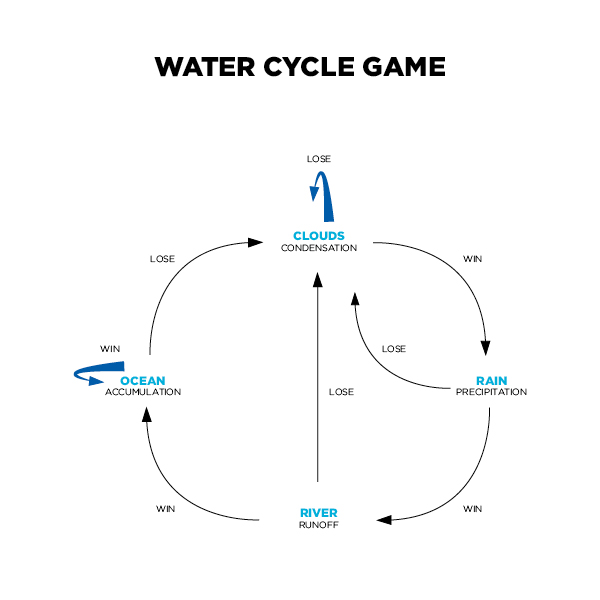In this game, students challenging each other in a moving, interactive, full-body, sound effect version of Rock, Paper and Scissors that incorporates four different stages of the water cycle:
- condensation
- precipitation
- runoff
- ocean accumulation.
This game demonstrates how water particles may take different pathways while still being part of the same water cycle.
The simplified water cycle:
- The vast majority (~97%) of our water is found in the ocean.
- Water from all of the sources (ocean, soil, lake, rivers, mountain tops, etc.) evaporates because of solar energy heating up the water particles.
- Water droplets in the sky condense and forms clouds. When the condensation of water droplets in a cloud increases, precipitation occurs as rain or snow.
- All of the water landing on the Earth’s surface will move from high elevation to low elevation following the path of least resistance, flowing downhill as runoff, on its way to the sea along the surface in a stream or river.
- Water eventually flows to the ocean where it accumulates until the water evaporates and the cycle continues. Some of the water gets collected into our water treatment tanks before it can unite with the ocean.
- Evaporation and precipitation are the links that keep the water cycle going.

 copy.jpg)
